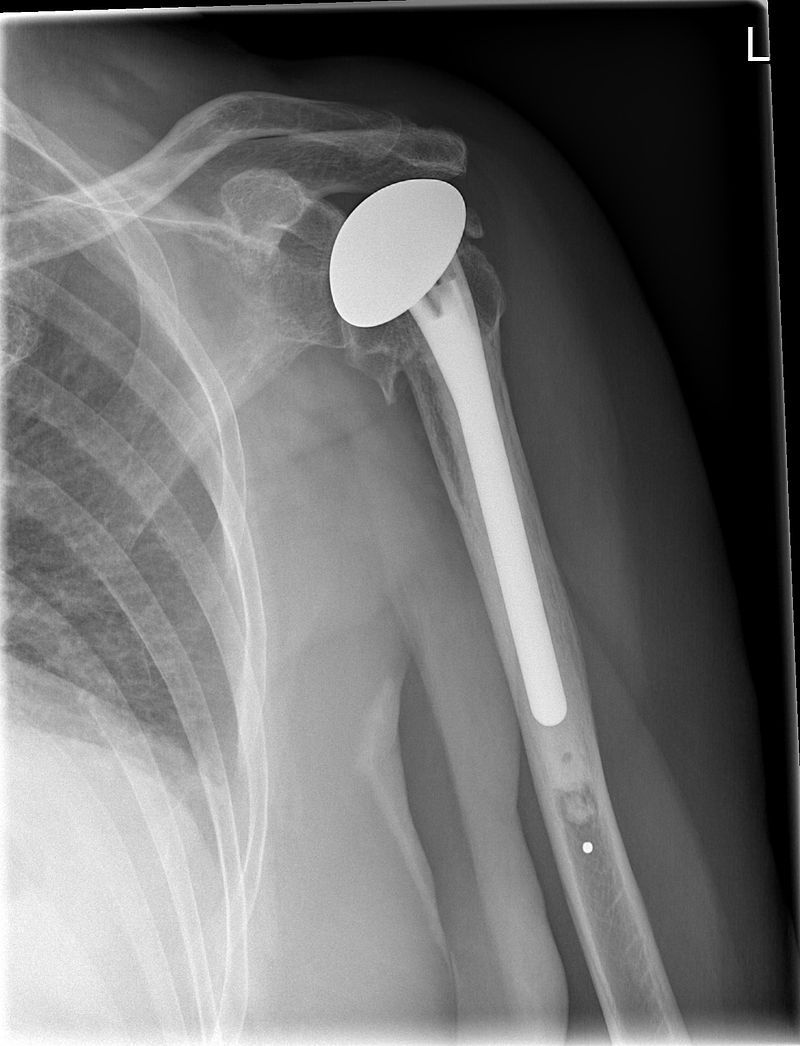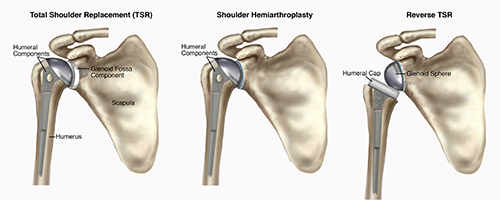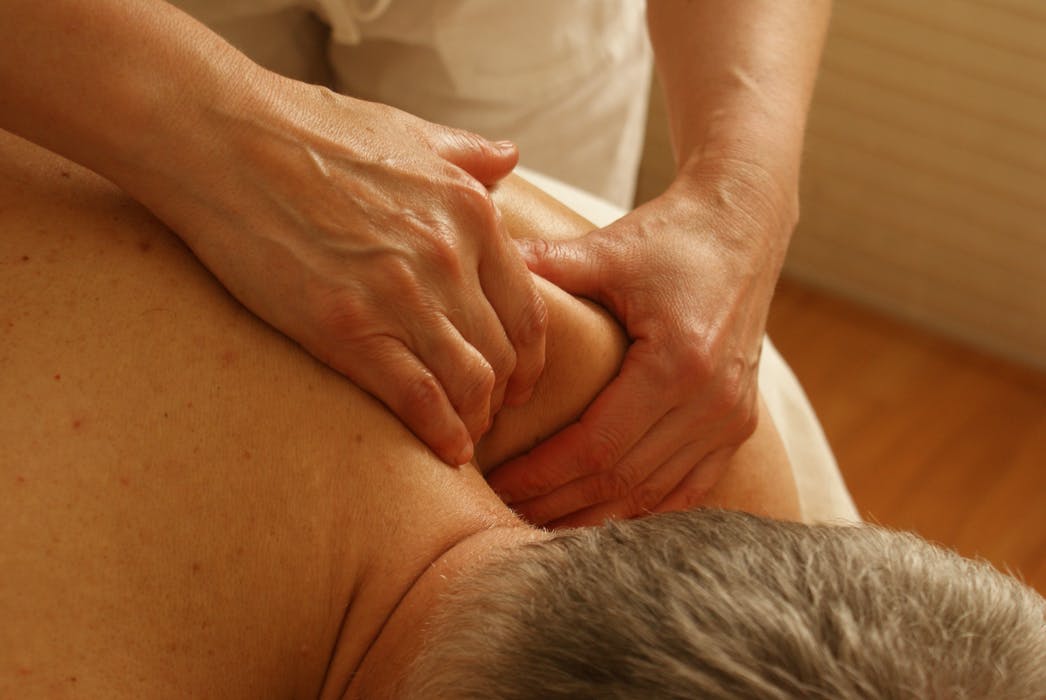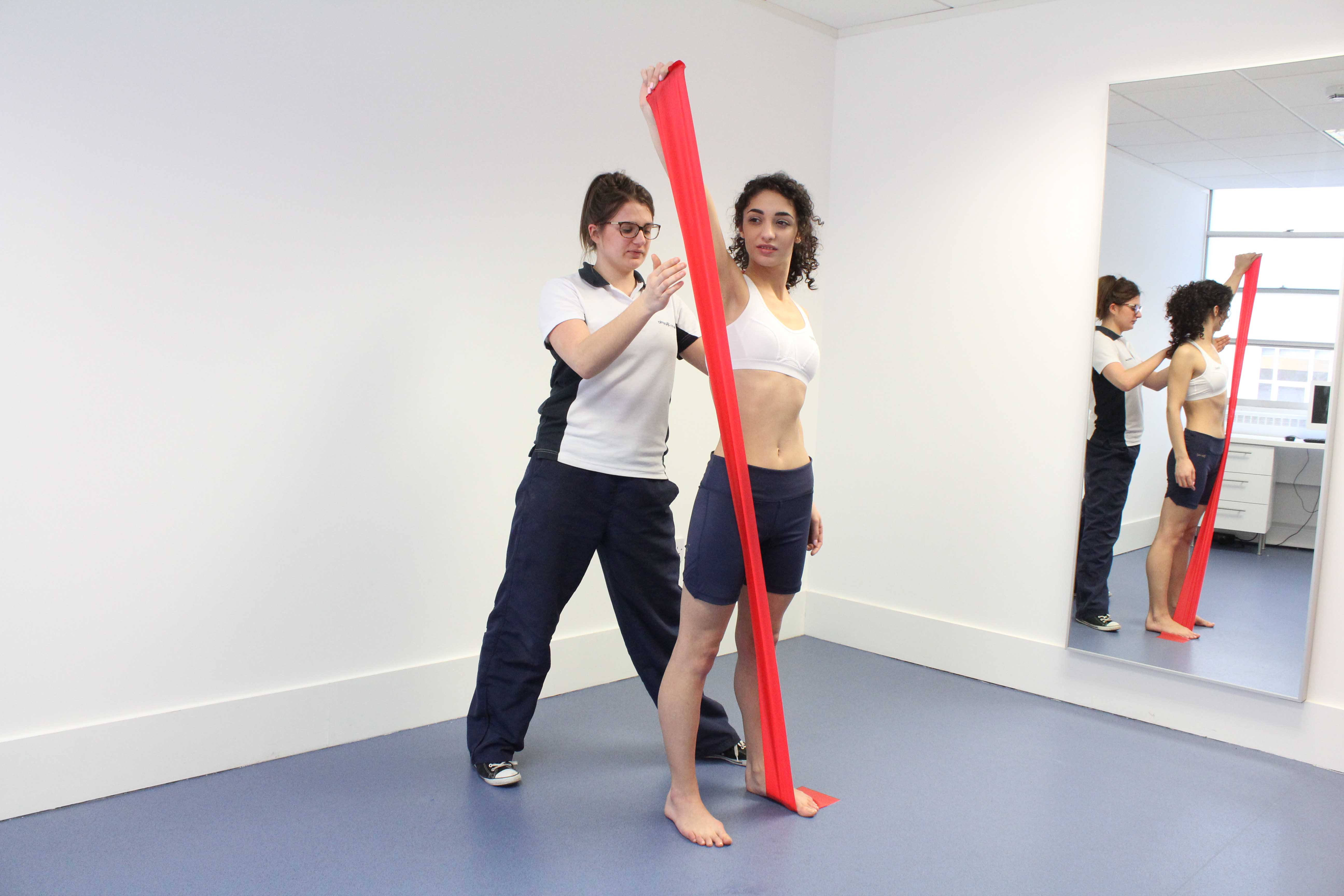|
BOOK NOW |
ASK ABOUT YOUR PAIN |
Home > Blog > Physiotherapy > Conditions > Shoulder Pain > Total Shoulder Replacement (Arthroplasty) Physiotherapy
Total Shoulder Replacement (Arthroplasty) Physiotherapy

Total shoulder arthroplasty (TSA), which is often called a total shoulder replacement, refers specificly to a surgical procedure in which part or all of the shoulder joint is replaced.
It is estimated that 53,000 people in the United States have shoulder replacement surgery each year, according to the Agency for Healthcare Research and Quality...and that number compares to the more than 900,000 Americans a year who have knee replacement surgeries and hip replacement surgeries.
Our senior physiotherapists can help patients who undergo a total shoulder arthroplasty
- return to their previous levels of physical activity
- including fitness training
- or participation in sports like swimming or golf
What is Total Shoulder Arthoplasty?
Total shoulder arthroplasty is a surgical procedure in which part or all of the shoulder joint is replaced. It is performed on the shoulder when medical interventions, such as
- other conservative surgeries
- medication
- and shoulder physiotherapy no longer provide pain relief
The decision to have a TSA is made following consultation with your orthopedic surgeon and our senior physiotherapists.
A shoulder replacement may be needed if you have any of the following conditions affecting the shoulder, causing severe shoulder pain and limiting your ability to use the affected shoulder:
- Osteoarthritis
- Rheumatoid arthritis
- Severe shoulder fracture
- Rotator cuff disease (a muscle tear or soft-tissue breakdown of the rotator cuff)
- Osteonecrosis of the shoulder (death of the bone tissue at the head of the humerus)
A total shoulder arthroplasty involves removing the ends of the bone at the shoulder joint, and replacing them with artificial parts.
The upper part of the arm bone (humerus) is shaped like a ball; it is called the "head" of the humerus. During a TSA, the head of the humerus is replaced by a metal ball. The socket that the head of the humerus sits in is called the glenoid fossa. During a TSA, the socket is replaced by a plastic cup.

Due to various physical limitations, your orthopedic surgeon may decide that you are a candidate for another form of TSA, such as:
- Shoulder hemiarthroplasty, where only the head of the humerus is replaced with a metal ball.
- Or a reverse total shoulder arthroplasty, where the metal ball and plastic socket are reversed. This procedure is recommended when the rotator cuff muscles of the shoulder are damaged. The plastic socket is attached to the top of the humerus, and the metal ball is attached to the socket. This procedure allows another shoulder muscle, called the deltoid, to take over for the damaged rotator cuff muscles, improving functional range of motion, strength, and stability of the shoulder
how our senior physiotherapists can help

Shoulder physiotherapy plays a vital role in ensuring a safe recovery by improving shoulder function, and limiting pain following a total shoulder arthroplasty.
Our senior physiotherapists will work with you prior to and following your surgery, to help you
- safely return to your previous levels of activity
- including performing household chores, job duties, and recreational activities.
Before Surgery
The better physical condition your shoulder is in before your shoulder surgery, the better your recovery will be. We will teach you exercises to build shoulder strength, and improve your shoulder and upper back movement to keep the shoulder as strong and mobile as possible up until the time of surgery.
After Surgery
We will educate you about precautions to take after surgery, such as wearing a sling to perform all activities, and gradually beginning to safely move your arm. If you are a smoker, quitting smoking will improve your healing process.
After your total shoulder arthroplasty, you will likely stay in the hospital for 2 to 3 days.
If you have other medical conditions, such as diabetes or heart disease, your hospital stay may be a few days longer. Your shoulder will be placed in a sling for the next 2 to 6 weeks; and you will be advised to not move your shoulder on your own.
Your shoulder physical therapy will begin within a day or two of your surgery. If you're still warded, a hospital physiotherapist will visit your room to teach you how to perform simple tasks like brushing your teeth, and tell you what movements (such as pushing, pulling, or reaching with the affected arm) you simply cannot perform.
They will teach you how to get in and out of bed safely, how to get the sling on and off, and how to get dressed while keeping your shoulder in a safe position. You will also learn how to minimize pain and swelling in the area by applying an ice pack, and elevating the upper arm.
You may need some help from friends or family members with daily activities for the first few days or weeks after your surgery. You will not be able to drive for the first few weeks after surgery.

When you are discharged from the hospital, continuation of physical therapy is essential, and this is where you will get outpatient shoulder physiotherapy with our senior physiotherapists. We will work with your orthopedic surgeon and work as a team to ensure your safe and full recovery.
Our senior physical therapists will teach you exercises that may include:
Range-of-Motion Exercises
It is important to not move your shoulder suddenly or with any force for the first 2 to 6 weeks following surgery, to allow proper healing. We will passively move your shoulder in different directions to allow you to safely begin regaining movement.
We will also teach you gentle exercises to perform at home. You will also learn range-of-motion exercises for the elbow and hand, so these joints do not get stiff from being held in a sling.
Squeezing a ball or putty will help keep your grip strong, while your shoulder recovers. You will use ice packs on the shoulder and elevate your arm on pillows to allow gravity to help reduce the swelling in the shoulder, as instructed by us.
Strengthening Exercises
As your shoulder mobility returns within a few weeks or months, we will guide you through a shoulder strengthening program. You may use resistive bands and weights to perform gentle strengthening exercises.
Functional Training
We will help you regain everyday shoulder movements, such as reaching into a cupboard, reaching behind your body to tuck in your shirt, or reaching across your body to fasten a seat belt.
Job and Sport-Specific Training
We will design a personalized program to enable you to resume your job tasks without pain. These may include reaching, pushing, or carrying movements. You will also receive sport-specific training if you are planning to return to a sport.
We will create a specialized home or fitness-center exercise program based on your individual needs, to be continued long after formal physical therapy has been completed.